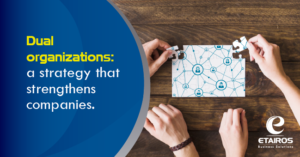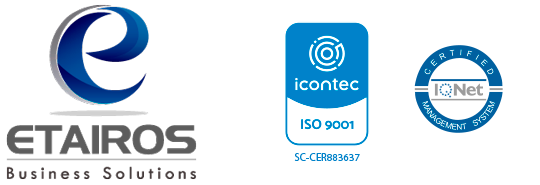
Our organizations have been focused, for many years, on the optimization of their internal processes, that is, they have been more focused on obtaining operational efficiencies than on acquiring true strategic agility in order to capitalize on market opportunities and avoid the threats brought by the dynamics of the current world, in a fast and safe way. There are many examples in recent times of organizations that have suffered great inconveniences due to the lack of agility when facing the challenges and / or threats that come from a world that is moving faster and faster. The consequences of the lack of agility and vision to face these difficulties have led some companies to bankruptcy or to be on the edge of it.
Until relatively recently, companies and their structures were more focused on maintaining control of these, to plan strategies in the long term, to make few changes and respond reactively to changes in the world today.
How should companies today face this new reality? The hierarchical structures are definitely necessary because they help us to adequately control the organizations as well as to execute the internal processes in an appropriate way, however, what does not work well in this type of structure is the identification of hazards and opportunities with sufficient anticipation, in such a way that allows us to react in the best possible way. This is why the challenge is to find a way to work within the organizations that allow us to control and operate properly, but at the same time allow us to advance to the future in a safe way.
John P. Kotter, a Harvard professor, proposed some time ago the solution to this challenge. According to Kotter, the current structures and processes of companies need an additional element to face the challenges caused by the increasing complexity and fast change. The solution is a second operating system within companies, dedicated to the design and implementation of strategies and whose main feature is that it is built on an agile structure, similar to a network with a set of processes very different from the regular. This operating system continuously evaluates the business, the industry and the organization, and reacts with greater agility, speed and creativity than the existing one. This is a complement to the current system rather than an overload to the current hierarchy; it is built and implemented with the existing human resource that has the best skills to develop the specific function that was entrusted to it. This structure goes beyond the positions and traditional hierarchical positions, and allows empowering the human resource in such a way that it provides its best abilities and capacities to the execution and acceleration of the strategic change of the companies. The traditional hierarchical structure and network structure will therefore work hand in hand to ensure the future of the companies.
In Etairos, starting this year, we have begun the process of implementing this style of dual structure (hierarchical + Network) in order to better take advantage of the opportunities that exist in the market, minimize risks, allow us to be more agile in our strategic changes and empower our human team. For this first phase we have defined six nodes (circles of evolution) within our network totally aligned with our strategic planning so that we can obtain concrete results in each of the initiatives in a short time. These circles are formed 60% by employees with the specific knowledge or skills needed and 40% by management team, to ensure alignment with strategic objectives. This alignment is also being implemented by a node we call “synchronization”, that allows us to organize resources, align expectations, and control the execution of the functions of each one. The challenge for Etairos this year is to evolve and react much more agilely to opportunities and threats, always at the hands of a valuable and committed human team.
